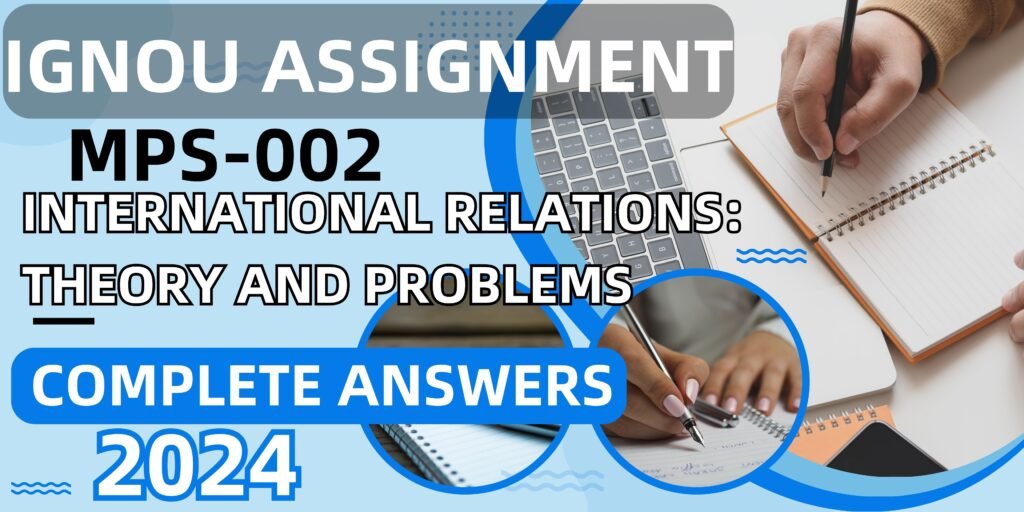IGNOU MES 016 Assignment Answers
MES-016
EDUCATIONAL RESEARCH
Answer the following questions in about 500 words each:
1. Differentiate between treatment variance and error variance in an experimental design. Discuss how a researcher can maximize treatment variance and minimize error variance.
2. Describe the scales of measurement in educational research. Explain how these scales of measurement decide the statistical measures to be applied for analysis of quantitative data.
3. What is a research report? Describe how you will prepare the format of research report for the M.A (Education) dissertation.
Answers
1. Differentiate between treatment variance and error variance in an experimental design. Discuss how a researcher can maximize treatment variance and minimize error variance.
In experimental design, understanding the concepts of treatment variance and error variance is crucial for interpreting the results of an experiment accurately. These two types of variance play a key role in determining whether the observed effects in an experiment are due to the manipulation of the independent variable (treatment) or other uncontrolled factors (error).
Treatment Variance
Definition: Treatment variance, also known as systematic variance, refers to the portion of the total variance in the dependent variable that is attributed to the manipulation of the independent variable or treatment. It represents the differences in outcomes that occur because of the intentional changes made by the researcher.
Significance: Treatment variance is the variance that researchers are most interested in because it indicates whether the experimental manipulation has an effect. If treatment variance is high, it suggests that the independent variable significantly influences the dependent variable, leading to a meaningful result.
Example: In an experiment testing the effectiveness of a new teaching method on student performance, the treatment variance would be the differences in student scores that can be directly attributed to the teaching method.
Error Variance
Definition: Error variance, also known as random variance or unsystematic variance, refers to the portion of the total variance in the dependent variable that cannot be explained by the independent variable. Instead, it is due to random or uncontrolled factors, such as individual differences among participants, measurement errors, or environmental variations.
Significance: Error variance is considered noise in the data and can obscure the true effects of the independent variable. High error variance makes it difficult to detect treatment effects, as it increases the likelihood that the observed differences are due to chance rather than the experimental manipulation.
Example: Continuing with the teaching method experiment, error variance would include differences in student performance caused by factors unrelated to the teaching method, such as prior knowledge, motivation, or external distractions.
Maximizing Treatment Variance
To draw meaningful conclusions from an experiment, researchers aim to maximize treatment variance. Here are some strategies to achieve this:
1. Careful Selection of Independent Variables:
– Choose independent variables that are theoretically and empirically justified to have a significant effect on the dependent variable. The more relevant the independent variable, the greater the treatment variance.
2. Use of Strong Manipulations:
– Employ strong manipulations of the independent variable to create clear and distinct conditions. A weak manipulation may not produce noticeable differences between groups, leading to low treatment variance. For example, if testing the effect of a drug, using an appropriate dosage that is known to have a biological effect is crucial.
3. Control of Extraneous Variables:
– Control or eliminate extraneous variables that could confound the results. By ensuring that other variables are held constant, the researcher can attribute changes in the dependent variable more confidently to the independent variable. For instance, in a classroom experiment, keeping the time of day, the environment, and the instructor constant can help isolate the effect of the teaching method.
4. Manipulation Checks:
– Use manipulation checks to confirm that the independent variable was implemented as intended and had the desired effect on participants. This helps ensure that any observed differences in the dependent variable are due to the treatment itself.
5. Increasing the Number of Treatment Levels:
– Including multiple levels of the independent variable can increase treatment variance by providing a more detailed picture of the relationship between the independent and dependent variables. For example, instead of testing only two teaching methods, a researcher could compare several methods to detect more nuanced effects.(Continue…..)
2. Describe the scales of measurement in educational research. Explain how these scales of measurement decide the statistical measures to be applied for analysis of quantitative data.
In educational research, the scales of measurement are foundational for the design, analysis, and interpretation of data. Understanding these scales is crucial as they determine the appropriate statistical techniques for analyzing quantitative data. The four primary scales of measurement—nominal, ordinal, interval, and ratio—each serve a distinct purpose in organizing and categorizing data, and their properties influence the selection of statistical measures.
Nominal Scale
The nominal scale is the most basic level of measurement, used primarily for categorizing data without any sense of order or magnitude. Variables measured on a nominal scale are classified into distinct categories based on attributes or characteristics. Examples in educational research include gender, race, school type, or subject preference. The categories are mutually exclusive and collectively exhaustive, meaning each data point can only belong to one category, and all possible categories are included.
Since the nominal scale does not imply any quantitative value or order, the statistical analysis is limited to non-parametric tests. Common measures include frequency counts, percentages, and the mode, which identifies the most frequently occurring category. The chi-square test is often used to assess the association between two nominal variables. (Continue….)
Click Here for Complete Answers
-
MA Education IGNOU MES-011 Assignment Solution
Original price was: ₹299.00.₹29.00Current price is: ₹29.00. Add to cart -
MA Education IGNOU MES-012 Assignment Solution
Original price was: ₹299.00.₹29.00Current price is: ₹29.00. Add to cart -
MA Education IGNOU MES-013 Assignment Solution
Original price was: ₹299.00.₹29.00Current price is: ₹29.00. Add to cart -
MA Education IGNOU MES-014 Assignment Solution
Original price was: ₹299.00.₹29.00Current price is: ₹29.00. Add to cart -
MA Education IGNOU MES-015 Assignment Solution
Original price was: ₹299.00.₹29.00Current price is: ₹29.00. Add to cart -
MA Education IGNOU MES-016 Assignment Solution
Original price was: ₹299.00.₹29.00Current price is: ₹29.00. Add to cart
IGNOU MES 016 Assignment Answers IGNOU MES 016 Assignment Answers IGNOU MES 016 Assignment Answers IGNOU MES 016 Assignment Answers IGNOU MES 016 Assignment Answers IGNOU MES 016 Assignment Answers IGNOU MES 016 Assignment Answers IGNOU MES 016 Assignment Answers IGNOU MES 016 Assignment Answers IGNOU MES 016 Assignment Answers IGNOU MES 016 Assignment Answers









